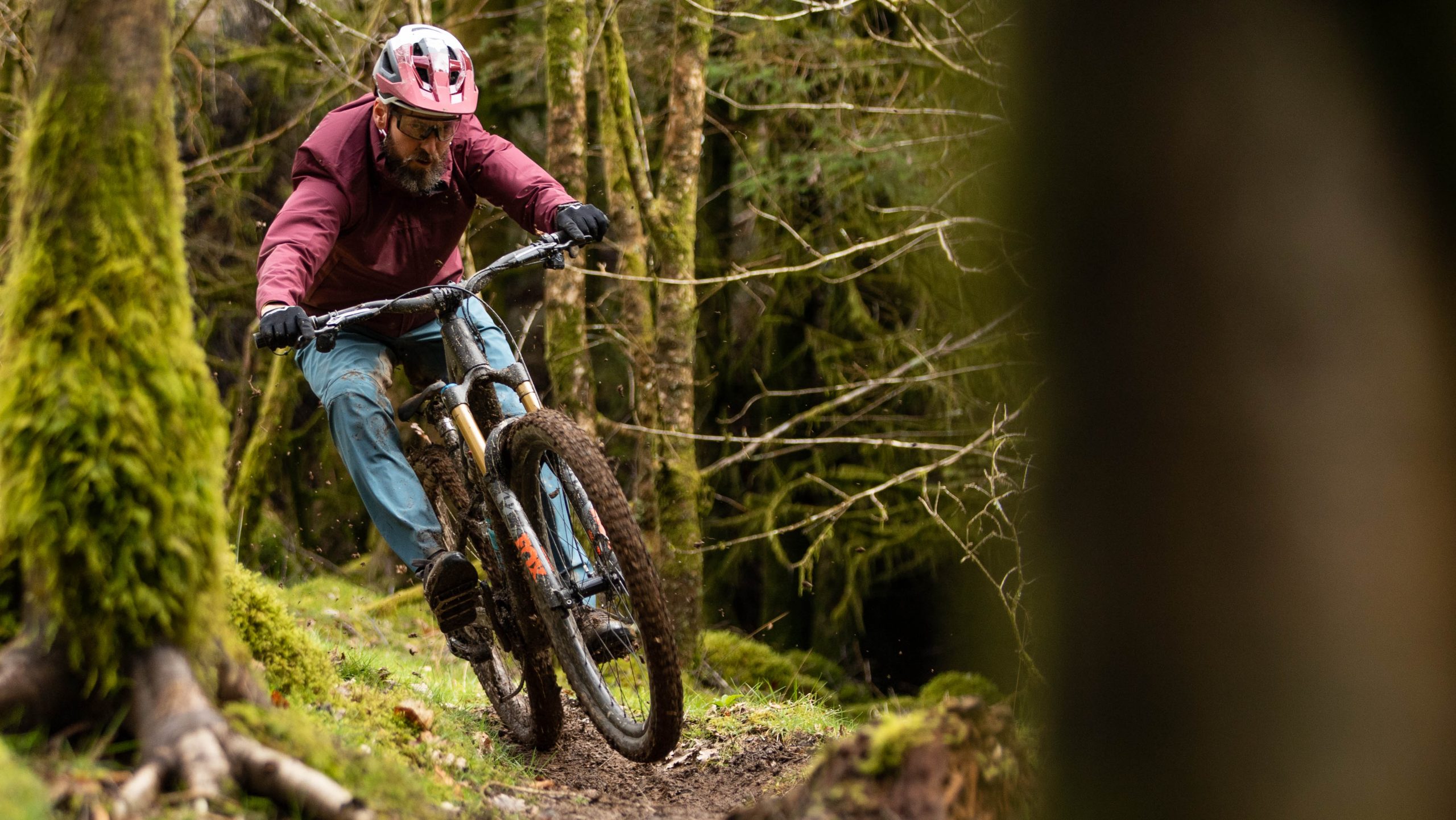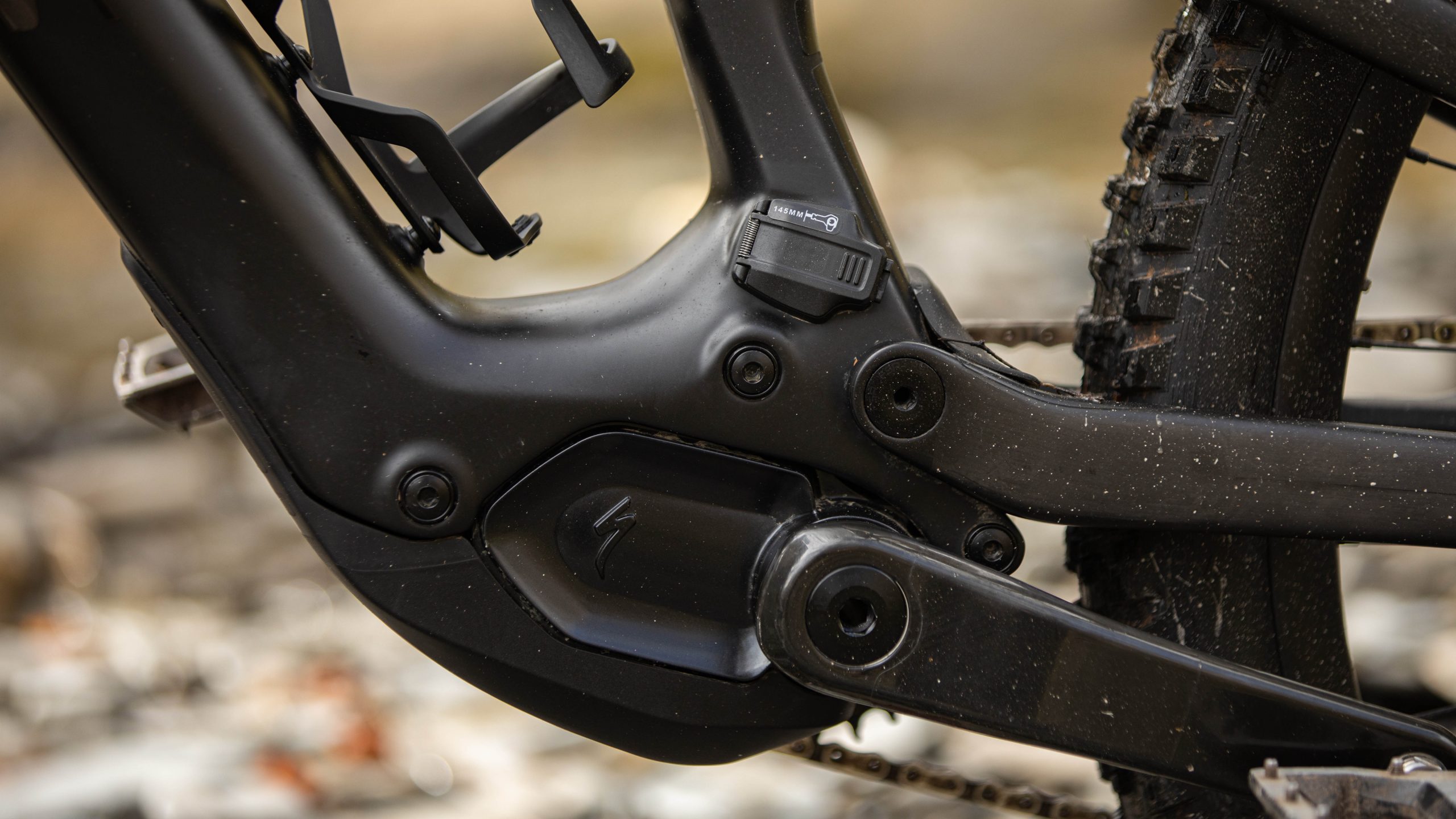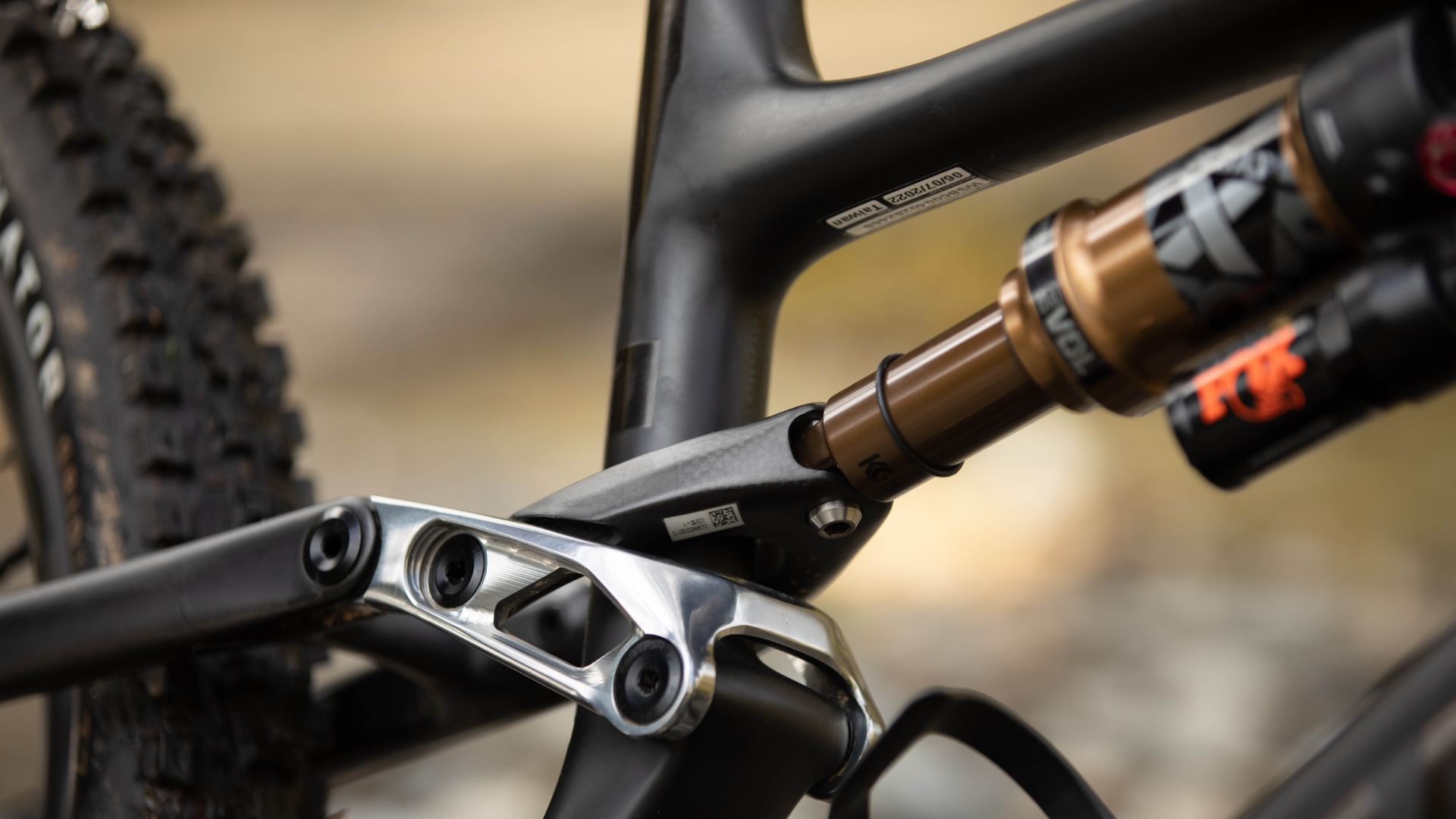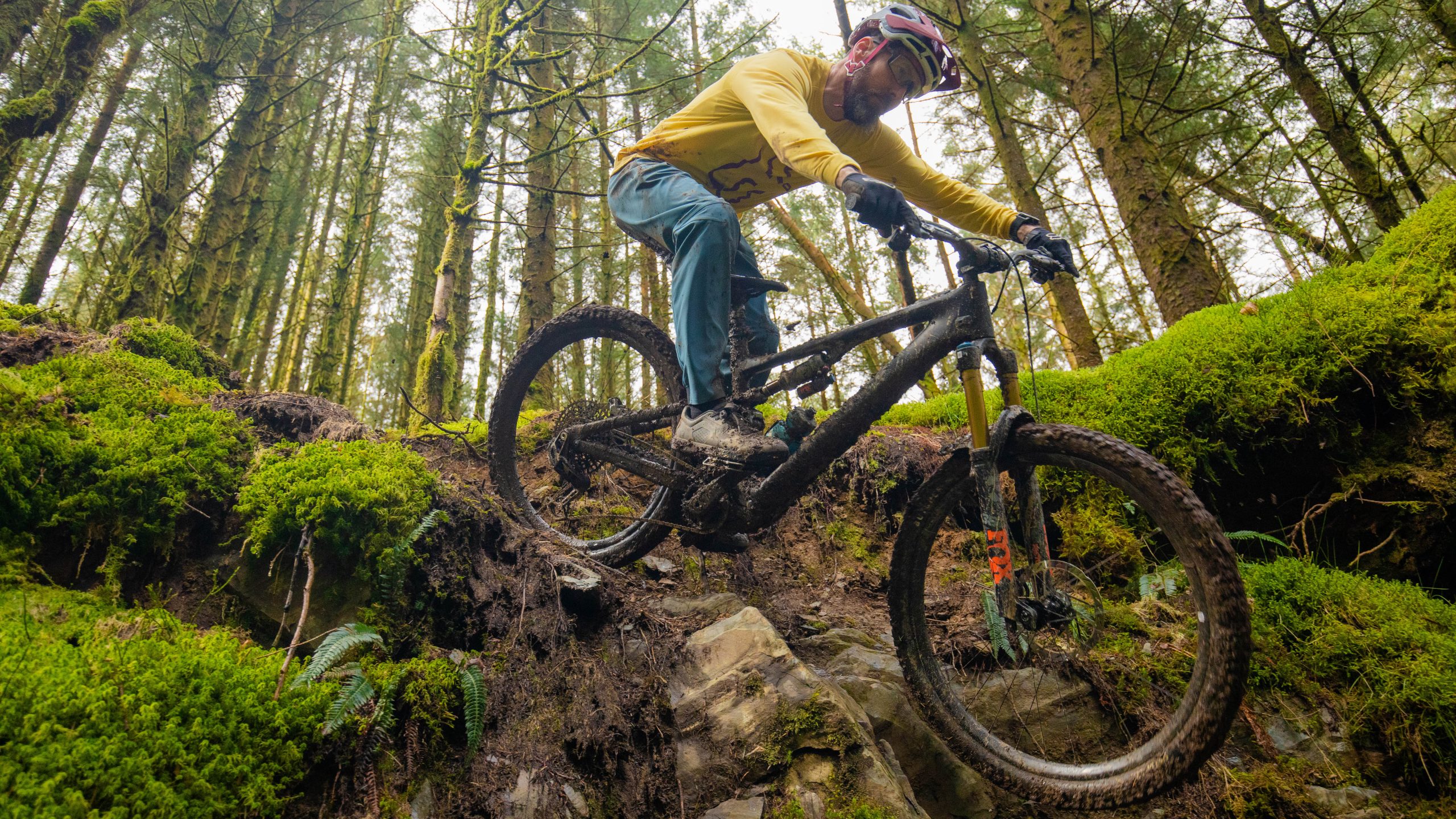Bike test editor Alan Muldoon shares his first impressions of the newly updated Specialized Turbo Level SL electric mountain bike - and while some things remain the same, others have changed for the better.
Specialized S-Works Turbo Levo SL Gen 2 e-bike first ride review
If ever there was a bike that I totally misjudged, it was the original Specialized Levo SL. Launched in Feb 2020, it instantly had what appeared to be outdated geometry and sizing where the 35Nm motor seemed seriously underpowered too. Factor in the flimsy tyre casings and a Fox 34 fork, both fitted for impressive weight saving, rather than impressive performance, and I basically looked the other way. Not the most professional approach for a professional bike tester, I know, but the numbers simply didn’t add up.
Want to know more about the updates in general? Find out more about the new Specialized Turbo Levo SL Gen 2 updates and range overview.
Need to know
- Full carbon frame with no side-arm – more freedom for linkage/kinematics and shock options
- Moves to S sizing, S1 to S6 – Travel is 160/150mm (S1:150/144mm)
- New SL 1.2 Motor has 50Nm torque, 320W peak power with two-piece honeycomb casing to reduce noise – 43% more torque 33% more power
- Battery capacity is 320Wh integrated, S-Works build come with 160Wh range extender
- Mastermind TCU on both models, customisable via Mission Control app
- Adjustable geo – three features – Horst link flip chip adapts geometry for 29in rear wheel, head seat cups offer +/- 1.25º adjustment 63º-65.5º, shock eyelet flip-chip offers +/- 5mm of BB height adjustment
- Revised kinematics give a more rearward initial axle path and increased anti-squat
- Two models: S-Works and Comp £7,000, stock builds come with MX wheel sizes
- S-Works bike get’s new SRAM XX1 AXS T-type drivetrain, without a jump in pricing
- Fork offset changes from 51mm to 44mm, to reflect new geometry and sizing

To be fair, Specialized was breaking new ground, so it had no way of knowing how the Gen 1 Levo SL would be received, let alone how riders would use and abuse it. It was, after all, in a category all of its own. Twelve months on, Specialized had the feedback it needed and it was clear that the Levo SL frame was much more capable than the original build kit adorning it.
As such, the fork got bumped up to a Fox 36, the shock grew a reservoir for better heat management, and the tyres got tougher casings. Sure, the overall weight crept up, but it was all lean muscle, which gave the Levo SL a swagger that it lacked previously. Now it had my full attention.
I tested the Expert model in 2021 and the S-Works verison in 2022, and both times I was impressed by the overall feel of the Levo SL. The supple suspension response offers ridiculously high levels of grip and control, combined with the subtle frame flex that mirrors the response of an analog bike. Sprinkle on the assistance of the motor and the Levo SL totally won me over.
Yes, the frame proportions were short-ish and a touch tall, and other brands were beginning to catch up and even exceed the power output of the SL motor, but in our Lightweight e-bike shootout the Levo SL was still the lightest bike and had the best suspension in test.
My primary concern with the introduction of the Gen 2 Levo SL then, wasn’t how much power it had, but if Specialized had managed to retain the frame feel and ride quality that made the original Levo SL such a ripper.
One morning on off piste trails in Dyfi forest was enough to reassure me that Specialized hadn’t swung the pendulum too far in the opposite direction with the overall ride feel. The new bike still has that responsive ride quality but now the frame proportions and S sizing mirror the Stumpy Evo really closely. The S4 Levo SL sporting a 471mm reach, which is 21mm longer than the outgoing model in size L.

On one partially steep climb, it was obvious that the new SL 1.2 motor has more grunt than before too. Steep rocky steps were dispensed with relative ease, and with 50Nm of torque, up from 35Nm, there was even an opportunity to soft pedal on mellower sections to let your heart rate and breathing recover. On the old SL, there would have been no respite in this terrain.
It’s not a night and day difference though, much in the same way that the TQ equipped Trek Fuel EXe wasn’t a step change over the old Levo SL in terms of power, but when it gets steeper you do appreciate the extra torque.
And the Levo SL’s new found love of climbing isn’t just about the increased power of the motor, the 2º steeper seat tube angle makes a massive difference here as it helps keep rider weight forward as the front end of the bike pitches up.
This, combined with the increased anti-squat and revised progression rate, means the rear suspension on the Levo SL feels less wallowly when the gradient changes rapidly, which in turn makes it that much easier to stay on your preferred line. There alway a trade off though, here it is that you forgo some of the pitter-patter suspension response of the old bike to gain a more stable pedalling response.
The range topping S-Works build gets SRAM’s flagship XX AXS T-Type drivetrain, where the shifting under load is impressive, even if the up-shift pad on the shifter pod is a bit of stretch for shorter thumbs. Danny did a deep dive on the new T-Type drivetrain so I won’t cover the details again here, but I did notice that the shifting response isn’t as fast as with the old XX AXS setup.

With increased power comes increased responsibility to metre your battery capacity. The Gen 2 Levo SL uses the same 320Wh internal battery as before, considerably less than the Fazua Ride 60 system with its 430Wh battery. The real ace up Specialized’s sleeve then is the 160Wh range extender that comes stock on the S-Works build. And with the addition of the Mastermind TCU embedded in the top tube, keeping on top of the bike’s vital stats has never been easier.
With more power, the range must be reduced, right? To answer that question definitively I performed the exact same max-power range test on the new Levo SL as with the old Levo SL. And yes, the range is lower, but the drop in elevation was less than 10%, so it still out performed the Trek Fuel EXe. Also, if high mileage is the end game, there’s nothing to stop riders fine tuning the level of power and support with the MicroTune feature in the Mission Control app to replicate the range of the old bike.
And if you prefer the size, fit and geometry of the old bike, that’s achievable too. Just like on the latest generation Turbo Levo all you need to do is downsize, fit the +1.25º headset cup and you are pretty close to where the previous bike was, albeit with a steeper seat tube angle and a 25mm shorter seat tube.

The S-Works model gets SRAM XX Eagle
Point the new Levo SL down anything steep or fast and it’s equally adept as on the climbs. The suspension doesn’t have the same degree of responsiveness or traction as before though, but the bike rides flatter and feels more stable due to the increased sizing and anti-squat, both of which give you more confidence to ride fast and take chances.
On the steeper trails of N Wales I found the stock MX wheels (29in front, 27.5in rear) and overall weight distribution of the bike to be ideal. Then when I rode the Levo SL in Monmouth, where most of the trails aren’t as steep, I had to remind myself to shift my weight forward and consciously load the front end of the bike. The same was true in sunny Surrey, at least until I switched to a 29in rear wheel.

Much to my surprise, the small chainstay pivot flip chips do exactly as claimed: extending the rear end length by 5mm to accommodate the bigger 29in rear wheel while keeping all of the bike’s other vital stats identical. Impressive. Not only was the longer chainstay enough to centre me on the bike for mellower trails, it highlights the real beauty of the Gen 2 Levo SL.
With adjustable headset cups, and flip chips in both the shock eyelet and chainstay pivots, it’s the most adjustable bike Specialized had produced to date. Combine all of the adjustability with six frame sizes and riders that like to tweak, have never had it so good.
If that’s a bit too much cash but you’re still looking for a good quality eMTB, check out our guide to the best budget electric mountain bikes as there’s bound to be something there for you. Or if you just want to know the best of the best, tried and tested by our experts, read our ultimate guide to the best electric mountain bikes which covers every budget and riding type.
Verdict
At 17.65g (38.91lb) without the range extender fitted, the new Levo SL is still one of the lightest bikes in class, even if the smaller, lighter 27.5in rear wheel massages the figures ever so slightly. The side-arm has been amputated too, and while this gives Specialized more freedom with the suspension layout and shock choice, the frame still feels like it has just the right amount of flex, even though the front end is now longer. I suspect the decision to remove the side-arm is also about differentiating it from the old design. Because, let’s face it, if the frame design looked the same, you’d probably scroll straight past it wrongly assuming it’s the same old bike even though it’s essentially done a ground up redesign. The real difference then has been in geometry and sizing, so if you’ve been watching the evolution of the Levo SL and didn’t like how the numbers added up, the new version lets you manipulate the figures for geometry and assistance like never before. At £13k though, you’ll probably need to manipulate some other figures just to cover the cost.
















